Many thanks for this very interesting and well researched Salon. Being unfortunately professionally too much busy, it’s a long time I haven’t had the pleasure to post something on this board.
I offer here a complete khorjin which, at least for me, is unmistakably a Fars Luri bag and such one can’t be confused with Qashqai ones sharing the same design.
Here is a picture of the front side:
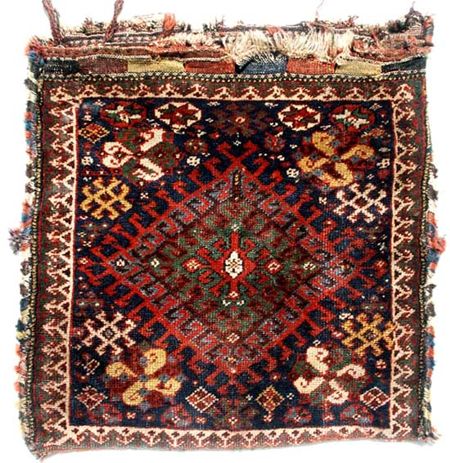
First of all what makes this one Luri is it’s less refined, less elegant, more barbaric design,
Even if it is colorful, the color palette is somber. The pile is clipped high, the handle is heavy and very floppy, all characteristics of Luri weavings.
Look to the lack of symmetry and the numbers of irregularities in its execution. Such features will never appear in Qashqai’s work.
Are Luri weavers less skilled? I am not thinking so. One reason is that their production was certainly less influenced by the market tastes than the Qashqai’s work and that most of their weavings were perhaps produced for strictly local use. May be they were still nomadic while the Qashqai weavers were settled.
Why don’t we find as we find in other countries well executed artistic so-called “dowry pieces”.?
The weft faced flat woven back side shows a pleasant chevron pattern
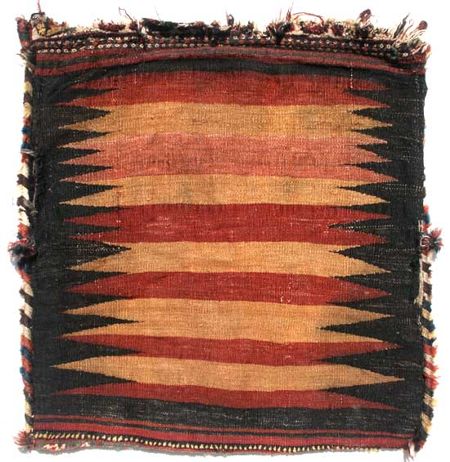
And here is a close up of one bottom corner viewed from the back.
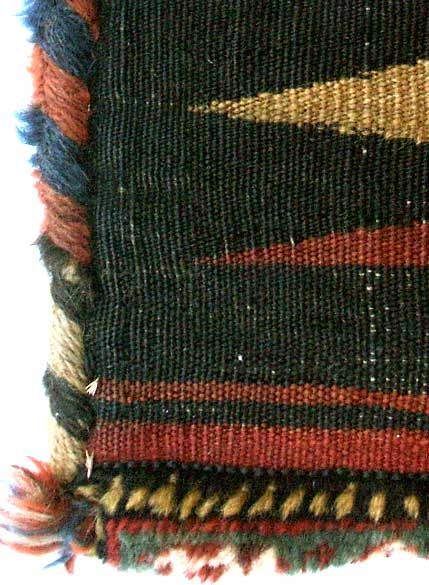
The closure system is of the Persian slit and loops system adorned in the South Persian style with rows of two color countered twining and small complementary weft weaver rosette borders.

Each 4 inches the twinning yarns are braided at the front side to form the loops as it can be seen in this photo:
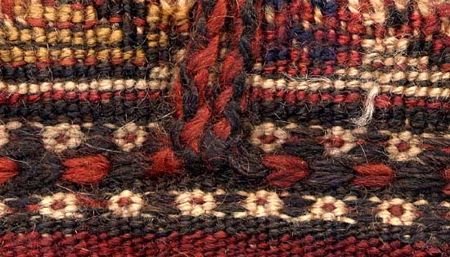
Unusual is the pile section appearing at the back side, at the top of the closure system. Remnants of it are still visible in this photo. What was its function?
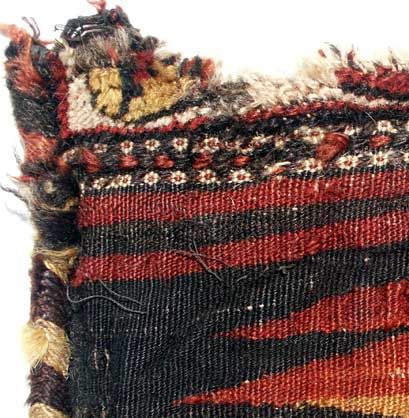
The very decorative multi colored plait stitch join presented here side ways is also somewhat unusual as the yarns instead of being continuous are cut ate the front side to make small tufts.
In each corner and in the middle of each edge there are remnants of tassels.
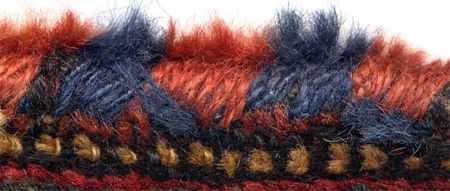
The usual haphazard structure is also very typical, even if it less coarsely woven (66 knots psi 864/dm²) than usually (Qashqai’s proximity influence?)
The way the symmetrical knots are unevenly packed, the use of wefts of different colors coming from several batch of wool, the use of discontinuous wefts to shape the design, the warps of different colors, the loose weave, ....all this make it Luri .
Look to the several photo’s of the back shown here.
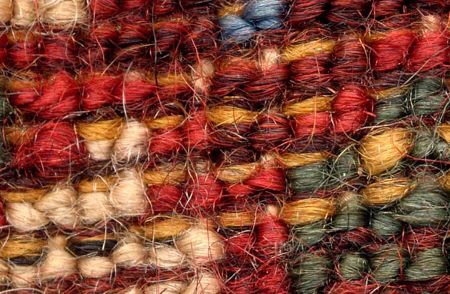
This back is for me the most typical. In this magnified direct scan you can see the coarse weave, the uneven packing of the knots, the lack of depression, the several type of wefts used. There are in this small close up at least wefts of 4 different colors: red, medium brown, dark brown,
In the next one it is possible to see a discontinuous yellow weft with doing extra interlacing
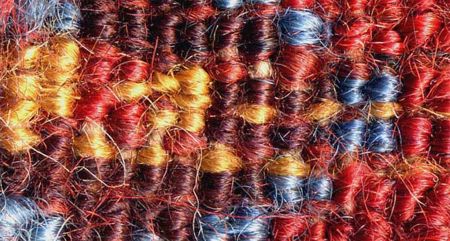
And in this one, a yellow discontinuous wefts crossing at two places (in the center of the photo) over the rows of knots to be inserted d in another area.
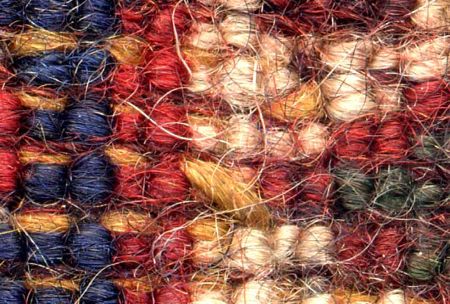
TECHNICAL ANALYSIS
Yarn spin Z
Sizes; 65cm x 65 cm
Warp: two ply - ivory or brown wool - yarns loosely twisted – no depression
Wefts: one wool single – two shoots – several colors red, medium and dark brown, yellow. Often use of discontinuous wefts to shape the design and the uneven knot packing.
Knots: symmetrical – 2 wool singles – H6pi V9pi 66psi H 24/dm V36/dm 864/dm²
Back side: wefts faced plain weave with wool singles in a chevron pattern
Joins: plait stitch and remnants of tassels
Closures: slits and braided loops – adorned with complementary weft weave “rosette” borders and rows of two color countered twinning.
Thanks,
Daniel Deschuyteneer.